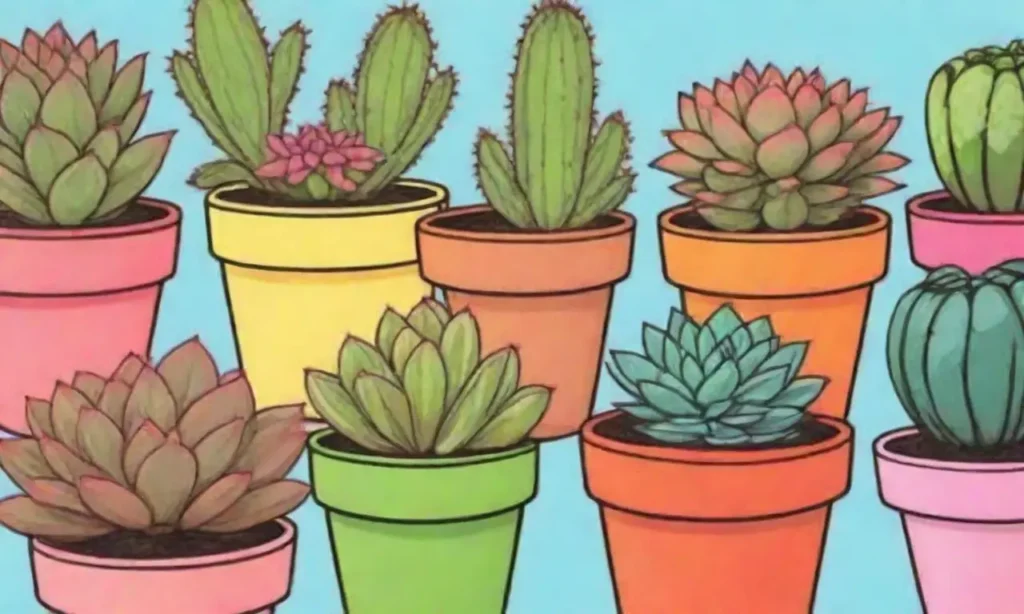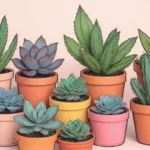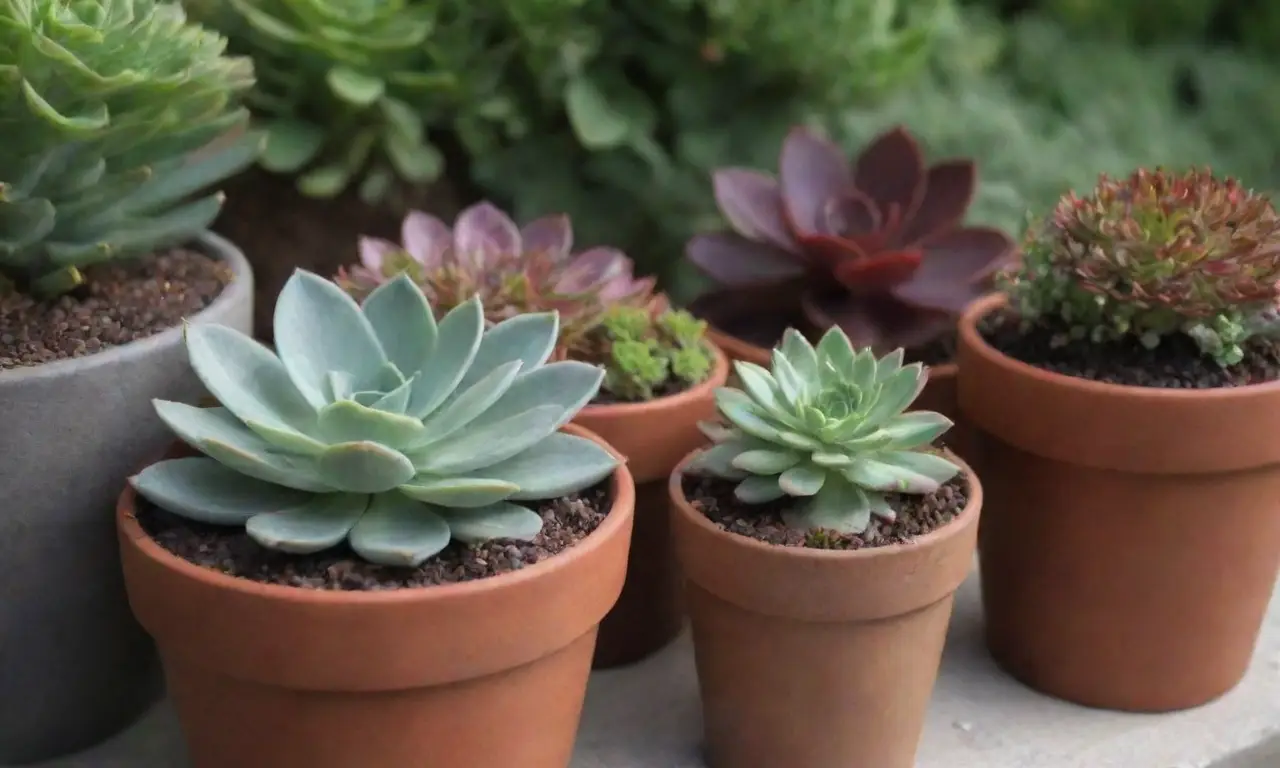Succulent Planters for Every Season: Enhance Your Outdoor Space

Introduction
Succulents have been rapidly gaining popularity in home and garden décor for their stunning visual appeal, low maintenance requirements, and flexibility in design. These hardy plants, which store water in their leaves, stems, or roots, thrive in various environments and are well-suited for outdoor settings. Whether you are a seasoned gardener or just getting started, incorporating succulent planters into your outdoor space can elevate the aesthetic of your garden, patio, or balcony while keeping it vibrant and lively throughout the year.
In this article, we will explore the versatility of succulent planters across the four seasons. We will cover design ideas, planting techniques, and care instructions to ensure that your succulent arrangements remain beautiful, lush, and thriving no matter the weather. From spring blooms to winter wonderlands, let's delve into how to enhance your outdoor space for every season using succulent planters.
Spring: Awakening Nature’s Colors
As the world awakens from a chilly winter slumber, spring brings a burst of life to our outdoor spaces, making it the perfect time to introduce vibrant succulent arrangements to your garden or balcony. During this season, aim for a mix of color, texture, and height in your planters. You may consider creating tiered planters or cascading arrangements to showcase the variety of succulents available.
Selecting Succulents for Spring
When choosing succulents for your spring garden, look for varieties that exhibit vibrant colors when exposed to sunlight. Echeveria, Sedum, and Aloe spp. are excellent choices, as they display beautiful rosettes and can vary in hue from rich greens to striking pinks and purples. Use drainage holes in your planters to prevent water accumulation, as spring also brings increased rainfall. Adding a top layer of decorative gravel can not only enhance the aesthetics but also help with drainage.
Additionally, spring is the perfect time to experiment with thematic planters. Consider using rustic wooden crates, colorful ceramic pots, or even repurposed items like tin cans and mason jars to create unique, eye-catching arrangements. Adding decorative stones, whimsical figurines, or seasonal flowers can further enhance the charm of your succulent planters.
Planting and Care Considerations
Spring is a great time to plant since the risk of frost has usually passed. Begin with a well-draining soil mix that combines standard potting mix with perlite or pumice to ensure appropriate drainage. Gently remove your succulent from its nursery pot, loosening any tightly wound roots before placing it in the new planter. Take care not to overwater, as succulents stored in moist conditions are at risk of rot. Instead, water thoroughly once the soil has dried out completely.
In spring, lighting is also essential for succulent growth. Ensure that your planters are placed in a location that receives at least 6 hours of sunlight daily. Regularly check for pests or signs of disease, as the warm temperatures can attract unwanted visitors.
 Revitalize Your Office Space with Seasonal Succulent Arrangements
Revitalize Your Office Space with Seasonal Succulent ArrangementsSummer: Embrace the Heat
As summer sets in, the outdoor living spaces take center stage, and succulent planters should be a focal point in your garden or on your patio. These resilient plants flourish during hotter weather, making this season ideal for showing off your succulent arrangements.
Designing Your Summer Planters
Summer is the best time to experiment with bold designs. Grouping various succulents with differing heights and textures can create visually striking, dramatic arrangements. Enhance these arrangements with brightly colored pots that complement the lush greenery of the plants. Think about materials too; ceramic pots are fantastic for regulating temperature, while concrete or stone options can add a rustic charm.
Create vertical gardens by applying succulents to a trellis or hanging objects. You can DIY your vertical planter by attaching small boxes or wall-mounted planters to achieve an innovative and space-saving design. You might also enjoy experimenting with hanging planters or shelves that can bring life to otherwise empty walls.
Maintenance During Hot Months
While succulents are drought-tolerant, it’s crucial to monitor their water needs during the sweltering summer heat. During hotter days, you might need to water your plants more frequently than during cooler months. A good rule of thumb is to check the top inch of soil – if it feels dry, it’s time to water. Early morning or late afternoon is the best time to water, preventing evaporation and ensuring the moisture gets into the roots effectively.
During summer, keep an eye on the amount of sunlight your planters are receiving. Most succulents prefer bright, direct sunlight, but in extreme heat, some may benefit from partial shade to avoid sunburn or scorching. Be proactive about pest control, particularly against mealybugs and aphids, which can proliferate in warm, humid conditions.
Fall: Transition to Earthy Hues

With the advent of fall, nature begins to paint the outdoors in deep oranges, reds, and browns. This season provides a fantastic opportunity to incorporate the season’s colors into your succulent planters and celebrate the transition with enriching textures and warm tones.
 Crafting Seasonal Wreaths Using Succulents: Step by Step
Crafting Seasonal Wreaths Using Succulents: Step by StepCurating a Fall-Friendly Display
For your fall succulent arrangements, consider using planters that mimic the colors of the season – think terracotta pots, wooden containers, or even warm-colored ceramic designs. Combining succulents with seasonal elements, such as small pumpkins, ornamental grasses, or colorful autumn leaves, can evoke the cozy feel of fall.
In particular, succulents like Sedum, which often feature warm autumn colors as they mature, can perfectly encapsulate this seasonal transition. Another option is to mix succulents with brassicas or cabbage varieties that thrive in cooler temperatures, offering additional texture and interest to your planters.
Preparing for Cooler Days
As temperatures begin to drop, it's essential to prepare your succulent planters for fall. While many succulent varieties can tolerate mild temperatures, frost can be a concern in certain climates. Consider moving delicate succulents indoors or creating shelters, such as cold frames, to protect them during particularly cold nights.
Watering needs will also shift in the fall. With cooler temperatures and shorter days, succulents will require less frequent watering. It is advisable to cut back on watering, allowing the soil to completely dry between sessions. Pay attention to changes in weather patterns, as unexpected frosts or warm spells can call for quick adjustments in care.
Winter: Embrace the Frosty Beauty
Winter, often viewed as a time of dormancy, can also present beautiful opportunities for succulent enthusiasts to explore a different realm of decor. Although most succulents slow down their growth during the coldest months, they can still thrive in outdoor arrangements if cared for properly.
Winter Planning and Aesthetics
In winter, consider incorporating planters that reflect the serene beauty of the season. Using white, silver, or blue-toned containers can mirror the winter landscape beautifully. You might want to choose a texture or finish that reflects winter landscapes, like galvanized steel or textured ceramic.
Create arrangements featuring succulents with captivating forms and colors. Hens and chicks (Sempervivum) are especially popular in winter planters for their wintertime grouping habit. Look for succulents with interesting textures, like Agave, whose spiky leaves contrast starkly with the smooth snow covered landscape.
Winter Care Strategies
During winter, sunlight may be limited, so strategically place your succulent planters where they receive maximum exposure to sunlight. If you experience prolonged periods of overcast weather, consider supplementing with artificial grow lights to ensure your plants can photosynthesize effectively.
Watering practices also need to adjust in winter; it is crucial to avoid overwatering. As temperatures drop, the plants go into dormancy and require significantly less water—typically every three to four weeks. Make it a point to check the moisture levels to avoid any potential risks of root rot.
Don’t forget to protect your succulent planters from harsh winter elements. If temperatures regularly dip below freezing, it may be worthwhile to either bring your planters indoors or wrap them in winter protective covers. A simple method to shield your succulents is to group the pots together, creating a microclimate that can retain warmth.
Conclusion
Incorporating succulent planters into your outdoor space offers unparalleled versatility and beauty throughout the seasons. Whether beautifying your garden in spring, creating playful summer displays, welcoming autumn tones, or embracing the serene cold of winter, there is always a way to elevate your outdoor décor with these hardy plants.
By selecting the right succulents for each season, you can create stunning arrangements that not only flourish but also add texture and color to your outdoor spaces. They require relatively low maintenance, making them an ideal option for those who wish to retain the beauty of their gardens while enjoying the changing seasons.
As you experiment with different arrangements and styles, allow your creativity to guide you. From the vibrant blooms of Echeveria in spring to the frost-kissed Sempervivum in winter, there is no limit to how you can harness the beauty of succulents. So, roll up your sleeves and start creating – your outdoor space is ready for a succulent transformation!
If you want to read more articles similar to Succulent Planters for Every Season: Enhance Your Outdoor Space, you can visit the Seasonal Displays category.
